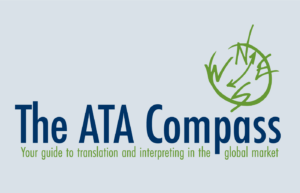Guide to Buying Interpreting Services, Part II: Interpreting Modality and Modes

Interpreters work in a variety of settings and in a variety of ways. These are important to understand when hiring an interpreter or team of interpreters and this article explains modality and mode as related to interpreting. To find out more about interpreting, refer to the American Translators Association’s Guide to Buying Interpreting Services, a resource to help clients identify, select and work with interpreters.
Interpreting Modality
Modality is the method by which interpreting services are delivered.
- On-site / In-Person: The interpreter is physically present in the same location as at least one other participant.
- Over-the-Phone Interpreting (OPI): Consecutive interpreting over a telephone line with at least some parties in another location.
- Video Remote Interpreting (VRI): Interpreting over a video platform with at least some parties in another location.
- Remote Simultaneous Interpreting (RSI): Simultaneous interpreting that uses special features of videoconference technology. Attendees can listen to the audio channel transmitted by an interpreter speaking in their language of choice. Multiple languages can be interpreted at the same time using this modality.
Modes of Interpreting
Interpreters use different methods to convey a message from one language to another. These are discussed below.
- Consecutive interpreting: The interpreter interprets after each speaker has paused. Each speaker speaks in turn. During long statements, the interpreter takes notes to ensure accuracy. Examples of where this mode may be used include medical appointments, court proceedings, and over the phone.
- Simultaneous interpreting: The interpreter interprets “live,” at the same time as the speaker speaks, with a slight delay. Simultaneous interpreters often work with electronic equipment from a booth, transmitting to listeners wearing headsets. Examples of where this mode may be used include large meetings between government or non-government organizations.
- Chuchotage/whispered interpreting: This is simultaneous interpreting without equipment. The interpreter sits near the individual who needs language services and quietly interprets what is being said to avoid disturbing others in the room.
- Sight translation: The interpreter transforms a written text into spoken language. This involves reading a short text silently in one language and speaking it out loud in another. Examples of where this mode may be used include entering text into the record of a court proceeding or communicating the contents of a document to a parent at a school meeting.
Additional ATA Resources
This is the second article in a series of articles introducing the American Translators Association’s Guide to Buying Interpreting Services, which was created to help those in need of interpreting services find the best provider for their project and work efficiently with the chosen interpreting provider. For the full guide, click here.
About the Authors
Eve Bodeux is an ATA-certified French to English translator specialized in tech marketing, commercial communications, marketing research and official documents. She is the Secretary of the American Translators Association and serves on the ATA Public Relations Committee.
Jamie Hartz is an ATA-certified Spanish to English translator and transcriber specialized in legal and commercial translations. She currently serves as the Chair of the ATA Public Relations Committee.
Language Services Directory
Subscribe to The ATA Compass
Connect with The ATA Compass
Recent Posts
What is a Certified Translation?
What are the basics of a certified translation? In the United States, anyone can certify a translation. A translator does not need to be certified in order to provide a…
Read MoreWhy You Should Use a Certified Translator or Interpreter
Choosing a Certified Professional is the Smart Choice A certified translator or interpreter ensures effective, accurate, and culturally sensitive communication that truly bridges the gap between languages and cultures. Accuracy…
Read MoreKnow Your Rights to Language Access
Is English Not Your Primary Language? If you have a limited ability to read, write, speak, or understand English, you are considered to be Limited English Proficient (LEP). As an…
Read MoreFind a Translator or Interpreter Near You
Searching for a Nearby Translator or Interpreter? Whether you require accurate document translations, real-time interpreting for an event, or specialized industry expertise, finding the right professional near you has never…
Read MoreExploring Translation and Interpreting Services
Why Are Language Services Essential in an Internationalized World? In a world where communication knows no bounds, effective language services are paramount. ATA helps you find professional translators and interpreters…
Read MoreThe ATA Compass
Want to reach more customers, grow your business, and improve your bottom line? The ATA Compass publishes articles and provides resources to show you how language professionals can help you…
Read More






